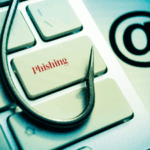Like an unwelcome ghost from the past, the Bumblebee malware has once again reared its ugly head.
First bursting onto the scene in March 2022, this vicious software allowed hackers to infiltrate the systems of thousands of organizations across the globe.
After enjoying over a year of mayhem, Bumblebee vanished without a trace in October 2023.
But cybersecurity firm Proofpoint has detected worrying signs that this malware has been resurrected from digital purgatory.
According to Proofpoint’s recent findings, several new variants of Bumblebee began circulating in February 2024 through fraudulent email campaigns targeting major corporations.
For IT security teams, it’s as if they are stuck in some nightmarish time loop. Just when they thought their troubles with Bumblebee were over, the relentless malware has evolved and returned hungrier than ever.
How the Malware Spreads Through Emails
The emails distributing the latest forms of Bumblebee pose as missed voicemail notifications, beckoning unwitting recipients to click on malicious Microsoft OneDrive links.
Once opened, these links covertly install weaponized Word documents with names like “ReleaseEvans#96.docm” – a clear attempt to emulate legitimate company files.
By tricking employees into running these files, Bumblebee activates a PowerShell command that injects its malicious payload onto the target network.
From there, the extent of the damage dealt depends on the whims of the hacker.
The compromised system could be ransomed for profit, plundered for sensitive data, or even sabotaged as an act of cyber warfare against a business competitor.
Regardless of motive, the consequences for the hacking victim can be utterly devastating.
Strategies for Defense Against Bumblebee
With advanced social engineering schemes enabling its proliferation, spotting telltale signs of Bumblebee before it breaches defenses is paramount.
IT security personnel should be on high alert for emails from suspicious addresses containing OneDrive links – especially if they have subject lines mentioning voicemails.
Scrutinizing attachments that encourage opening dubious downloaded files provides another vital layer of protection.
Implementing Protective Measures and Employee Education
Along with bolstering technological safeguards, companies can significantly mitigate risks by cultivating an organizational culture of cybersecurity awareness.
Regular employee training programs focused on recognizing phishing attempts prime human defenses. However, as hacking techniques grow more sophisticated, even tech-savvy workers can be fooled.
Deploying advanced email security software that automatically quarantines questionable messages before exposure helps provide a crucial fail-safe.
By combining vigilance in identifying cyber threats, proactive defensive measures, and workforce education, organizations can harden their systems against the resurgent Bumblebee attacks expected to plague inboxes through the summer.
Though eliminating risk entirely may not be possible, following security best practices will help frustrated IT teams finally squash this infectious malware.





